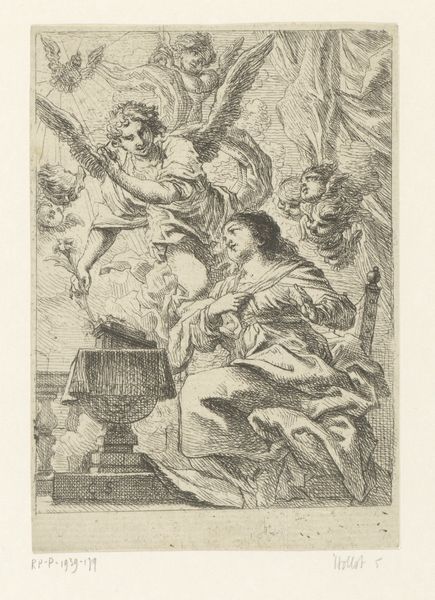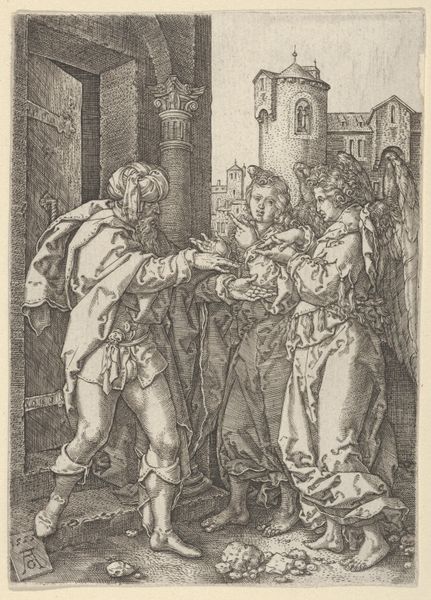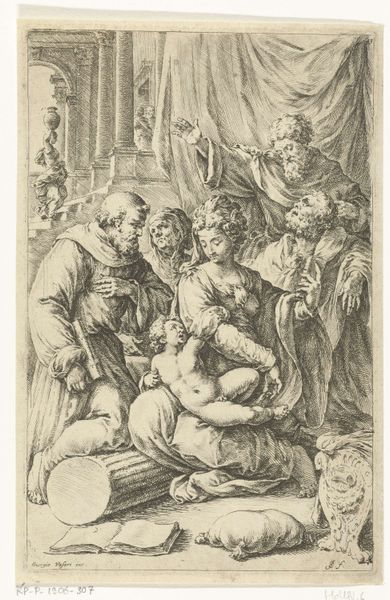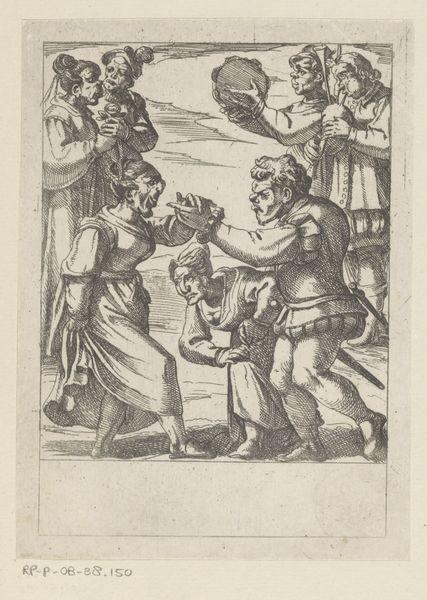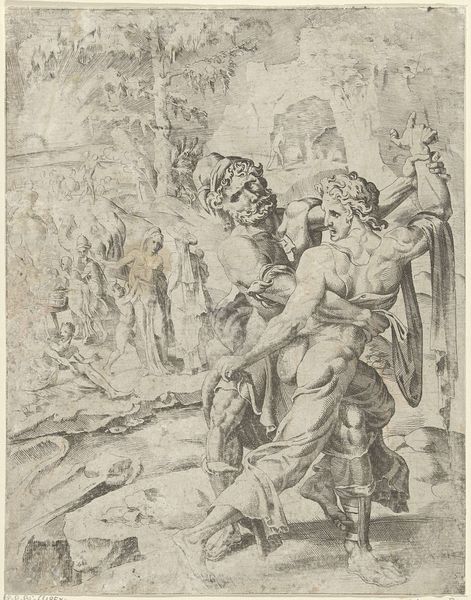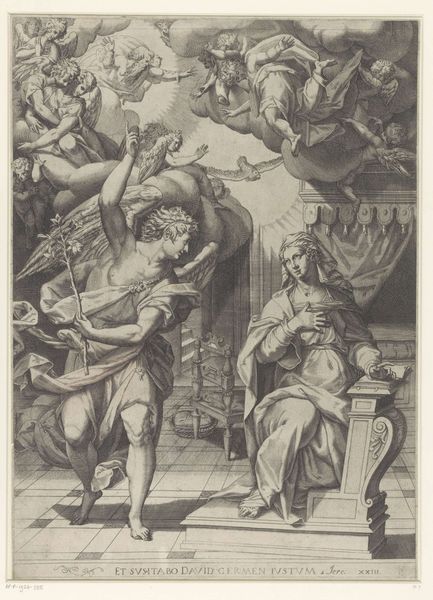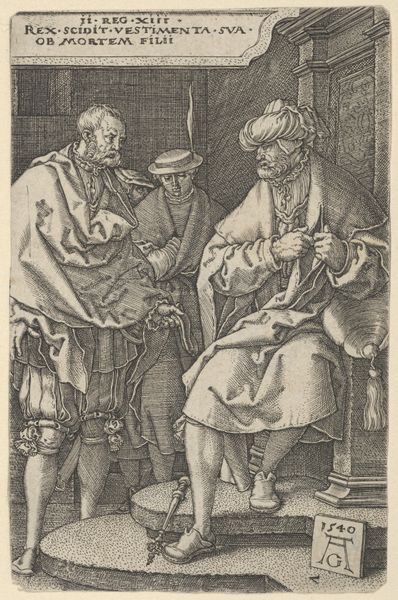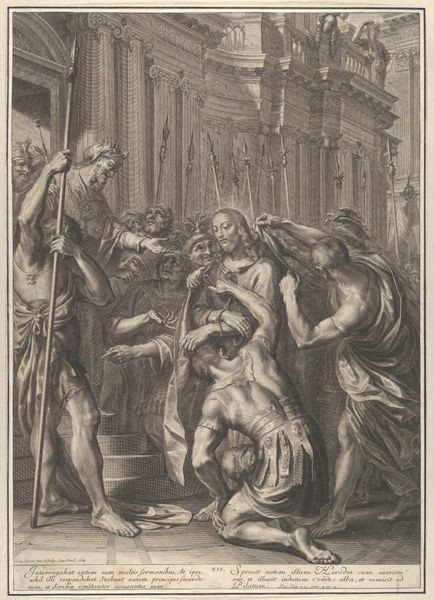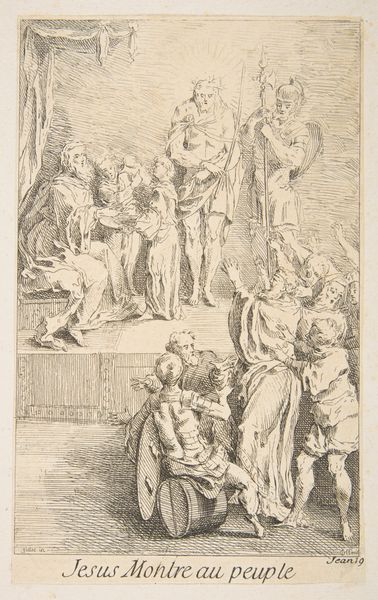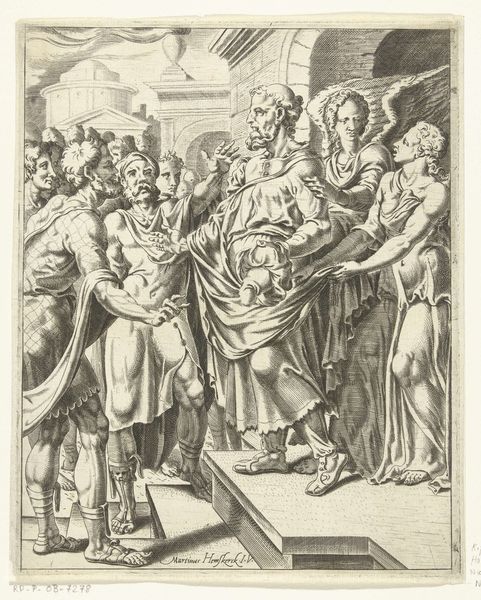
print, etching
#
narrative-art
#
baroque
# print
#
etching
#
figuration
#
genre-painting
Dimensions: height 425 mm, width 323 mm
Copyright: Rijks Museum: Open Domain
Curator: Before us is the etching "Waarzegster," dating from 1581 to 1660. It resides here at the Rijksmuseum, though the artist remains anonymous. Editor: My immediate thought is clandestine encounter. Look at the furtive glances, the way everyone is so tightly framed within the picture plane! It feels theatrical, almost stage-like. Curator: That’s astute. Genre painting flourished during this period, and this work provides a lens through which we can analyze the period's engagement with narrative-art. We are confronted with themes of social hierarchy and perhaps also critique, wouldn’t you agree? How does this visual story inform us of gendered economics of the time? Editor: Certainly. We can observe the materials that define social standing. Take the feathered hat, the intricate detailing of clothing—these visual cues speak volumes about the material privileges held by the character interacting with the supposed “fortune teller,” as well as alluding to labour that underpinned production of all of the above. Curator: Precisely. There’s also that almost cynical air around the figure observing the transaction, as well as a hint of mischief from the boy grabbing his sleeve. How are these attitudes constructed through formal elements of design, though, particularly through this medium of print? Editor: Note the layering. The composition has a tangible, textural density achieved through the etched lines. I imagine the tools used by the artist to make such fine hatching also played an interesting role, as they define this era in print-making. We’re talking about metal, acid, deliberate skill. What level of social power would the printmaker had access to and under what specific context would he depict a certain topic with clear critique. Curator: It is so fascinating to dissect all those considerations. It provides a point of convergence of both personal and structural analyses! Editor: Indeed. These details offer much to consider about labour, value, and performance in image-making. Curator: Absolutely. Looking at it this way creates fascinating new context of historical narratives we didn’t necessarily envision. Editor: Precisely. Understanding materiality gives a lens for wider interpretations of history in relation to labour, while social criticism contextualizes such depictions within specific eras and cultures.
Comments
No comments
Be the first to comment and join the conversation on the ultimate creative platform.
